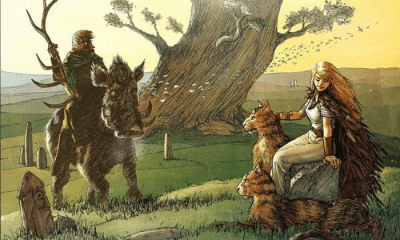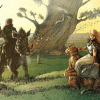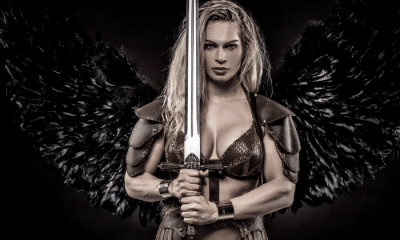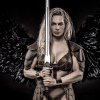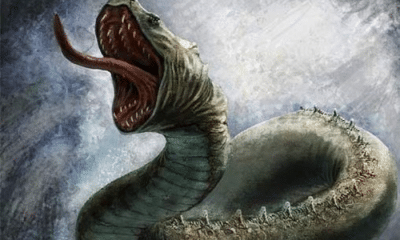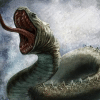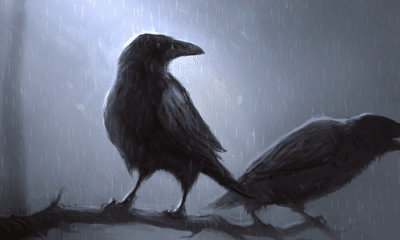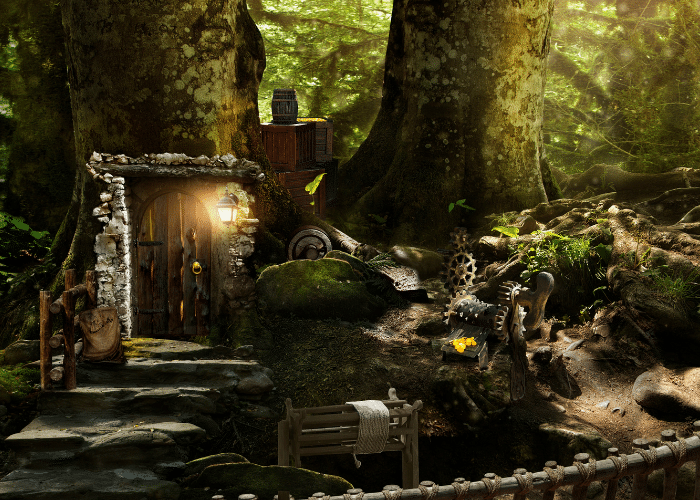
Norse
Dwarves in Norse Mythology
Dwarves in Norse Mythology
We all know dwarves as short, bearded characters who love ale, fighting, and gold. But how were they really depicted in Norse mythology?
When people think of the dwarves, a common image springs to mind. The dwarves were short, burly people who forged metals in their underground homes.
They were the opposites of the elves, who were creatures of light and grace. While the elves were tall and beautiful, the dwarves were almost grotesque.
While both races were known in the myths and folklore of many Germanic cultures, they are most familiar from the Norse legends. Our modern view of the dwarves comes almost directly from the characters in these stories.
Or does it?
Modern scholars believe that the Norse may have thought of the dwarves much differently than we do today. While some aspects of our common idea of them were taken from Norse myths and culture, others were inventions of later eras.
What Were the Dwarves Like in Norse Mythology?
The dwarves were a race of creatures known in many Germanic cultures. In Old Norse, they were called the dvergr.
The Norse dvergr had many similarities to the dwarves that are familiar in modern fantasy settings. They were most often described as living underground and were known to be great metalsmiths and inventors.
When Loki needed to acquire golden hair for Sif, for example, he visited two groups of characters who are most often interpreted as dwarves. They not only made new hair for Sif, they also invented other magical creations as gifts for the gods.
These industrious and crafty dwarves fit well into the modern image of the race, but the definition of a dwarf in Norse mythology sometimes seems more ambiguous.
For example, one group of dwarves mentioned in the same story are the sons of Ivaldi, who is elsewhere called the father of Idunn. Idunn, the goddess of youth, is usually called an elf instead of a dwarf.
Some dwarves seem even less connected to the usual idea of such a creature.
Many dwarves in the stories are villainous characters. Kvasir, for example, was murdered by two dwarves who brewed his blood into the Mead of Poetry after he was invited to their home as a guest.
In another legend a dwarf called Alviss seeks to marry Thor’s daughter. The god keeps him engaged in conversation until the sun rises, at which point Alviss is turned to stone.
The idea that dwarves cannot be in the sunlight is not mentioned anywhere else and many named dwarves live aboveground. The character of Alviss seems to have more in common with the usual depiction of a troll than of a dwarf.
Nor are dwarves necessarily short in Norse mythology. While their strength is sometimes noted, their height rarely is.
In fact, the names of some dwarves imply that they are exceptionally large rather than shorter than the average human. Fullangr, for example, means “Tall Enough,” while Har translates as “High.”
Sometimes, dwarves take on surprising roles.
The Prose Edda names many dwarves, but four are given special importance. Named Nordri, Sudri, Austri, and Vestri, they correspond to the four cardinal directions.
These dwarves fill an archetypal role often taken by giants or gods in other cultures. They hold up the dome of the sky at the four points.
While the stories are inconsistent in regards to the role of the dwarves, they are equally as contradictory about their origins.
The Poetic Edda says that the first dwarves were made from the blood and bones of a primordial being named Brimir, often thought to be another name for Ymir. This would make them close relatives of the jotnar, or giants, who were formed from his sweat.
The Prose Edda, however, gives them an even more inglorious origin. They were originally maggot-like creatures who grew in Ymir’s dead flesh until the gods gave them the gift of reason.
On the whole, there seems to be no consensus in Norse myths about what type of beings the dwarves were. Some were troll-like villains like Alviss, while others were industrious inventors like the sons of Ivaldi.
Modern scholarship believes that the problem with interpreting the dwarves may not lie in the contradictions in the stories. Instead, it is with our own notion of what a dwarf was.
My Modern Interpretation
When Loki visits the sons of Ivaldi for Sif’s new golden hair, he does not travel to a world of dwarves. While other races have worlds named for them, such as Alfheim for the elves and Jotunheim for the jotnar, there is no world named for the dvergr.
Instead, Loki goes to Svartalfheim. This place’s name translates as “Home of the Dark Elves.”
Based on modern fantasy conventions, many readers interpret the dark elves as a less powerful or even evil version of the elves, a beautiful and regal race. These alternative elves, while they’re given a home world in the Norse cosmology, are never mentioned otherwise in Norse texts.
Instead, Svartalfheim is associated with the dwarves.
Dark elves may not have been a separate race in the Norse view. Instead, the title could have been another name for the dwarves.
While many dwarves appear as villains in Norse stories, the darkness referred to in the name of their homeland is not generally thought to refer to evil. Instead, the difference between Alfheim and Svartalfheim is often interpreted as a light world on the surface and a dark world below ground.
The image of dwarves living below ground remains popular, but in Norse mythology this seems to be one of the major differences between them and the elves.
Interpreting the dwarves as a subset of the elves would explain some of the incongruities in their stories. For example, it would justify why Ivaldi’s metalworking sons were called dwarves but his beautiful daughter was an elf who was counted among the goddesses.
This type of ambiguity between various races is not uncommon in Norse mythology.
The jotnar, for example, are usually thought of as the enemies of the gods. While some, such as Surt and Thiazi, are villainous characters, however, others are friends of the gods.
The jotnar are also often depicted as ugly, monstrous, or deformed. Many of the female jotnar, however, are described as exceptionally beautiful and become the wives and mothers of Aesir and Vanir gods.
Many names listed for the dwarves also give credence to the idea that they were closely related to the elves. Some, such as Alviss and Gandalfr, refer to the elves, or alfar.
If the dwarves were, in fact, virtually indistinguishable from elves, how did they come to be seen as such opposites in later works?
Some historians believe that the distinction between light and dark types of elves was not an original feature of Norse mythology. Instead, it was added by later writers who had been introduced to Judeo-Christian concepts of angels and demons.
The dark elves, or dwarves, came to be seen as aligned with evil because of this. Living below ground, particularly with the hot forges associated with metalsmithing, they were seen as demonic in comparison to the near-godly elves.
These beliefs persisted in Germanic folklore, in which the gods were no longer worshipped both other aspects of the pagan worldview persisted.
Some folklorists believe that the dwarves came to be seen as a lesser type of being. This was translated into being physically lesser, leading to their distinctive stunted stature.
Elves were often seen as physically lesser, as well. While regal elves reentered the popular imagination with Tolkein’s Lord of the Rings, in many countries they were traditionally seen as diminutive sprites rather than semi-divine beings.
The modern view of dwarves is largely influenced by both folklore and modern fantasy fiction.
In The Lord of the Rings, Tolkien gives many of the dwarves names taken directly from the Norse Eddas. Inspired largely by these works, his publications also featured artwork and cultural details that highlighted the connection to Norse mythology.
While their metalworking and names were Norse, however, some details were more in line with later Germanic folklore. Tolkien’s dwarves were short and stocky with thick beards and often gruff mannerisms.
This combination of traits set the standard for how dwarves are depicted in modern media. Angular Norse-inspired designs and Germanic-sounding names are still common.
Some modern writers have challenged the long-established view of the dwarves. In Neil Gaiman’s American Gods, for example, the dwarf Alviss appears as a character who surprises the main character by being taller than the average man.
On the whole, however, much of the modern view of dwarves is influenced by Tolkein’s combination of popular folklore and Norse legends. While some aspects of these depictions are true to the old myths, the Norse likely thought of dwarves as more similar to elves than most modern audiences would expect.
In Summary
The dwarves were a humanoid race mentioned in the legends of many Germanic cultures. They are most familiar from the Norse myths and sagas, where they were called the dvergr.
While modern readers have preconceived notions of what the dwarves were, Norse sources are in less agreement.
Many dwarves in Norse legends were known for their inventiveness and skill in metalworking and other crafts. Otherwise, however, their attributes are rarely agreed upon.
Some dwarves were villainous and wicked characters who seemed to have similarities to trolls. Others were more friendly with the gods, and at least one beautiful goddess is said to have had a dwarven parent.
The Norse dwarves also lived in Svartalfheim, “Home of the Dark Elves.” This has provided a major clue to modern scholars that the Norse dwarves were not entirely like our modern idea of them.
The Norse myths never mention the dwarves as being short or universally ugly. Some are even given the cosmological function of holding the dome of the sky aloft, certainly not a job for a three-foot-tall creature.
Clues given in Norse texts seem to indicate that the dwarves were thought of as similar to the elves, or even as a subgroup of that race. Their major distinction was not their size and appearance, but their behavior and where they lived.
The idea of dark and light elves may have originated with writers who were familiar with Christian notions of angels and demons. The dwarves were demonized by these writers while the elves were seen as characters of goodness.
Later folklore continued this evolution. Seen as minor or lesser beings, the dwarves eventually came to be thought of as physically smaller and less attractive.
Modern fantasy, inspired by the works of J.R.R. Tolkien, continues to link dwarves to their Norse roots through their imagined culture and connection to smithing. Their physical appearance, the most identifiable characteristic in many depictions, is more influenced by German folklore than Norse mythology, though.


